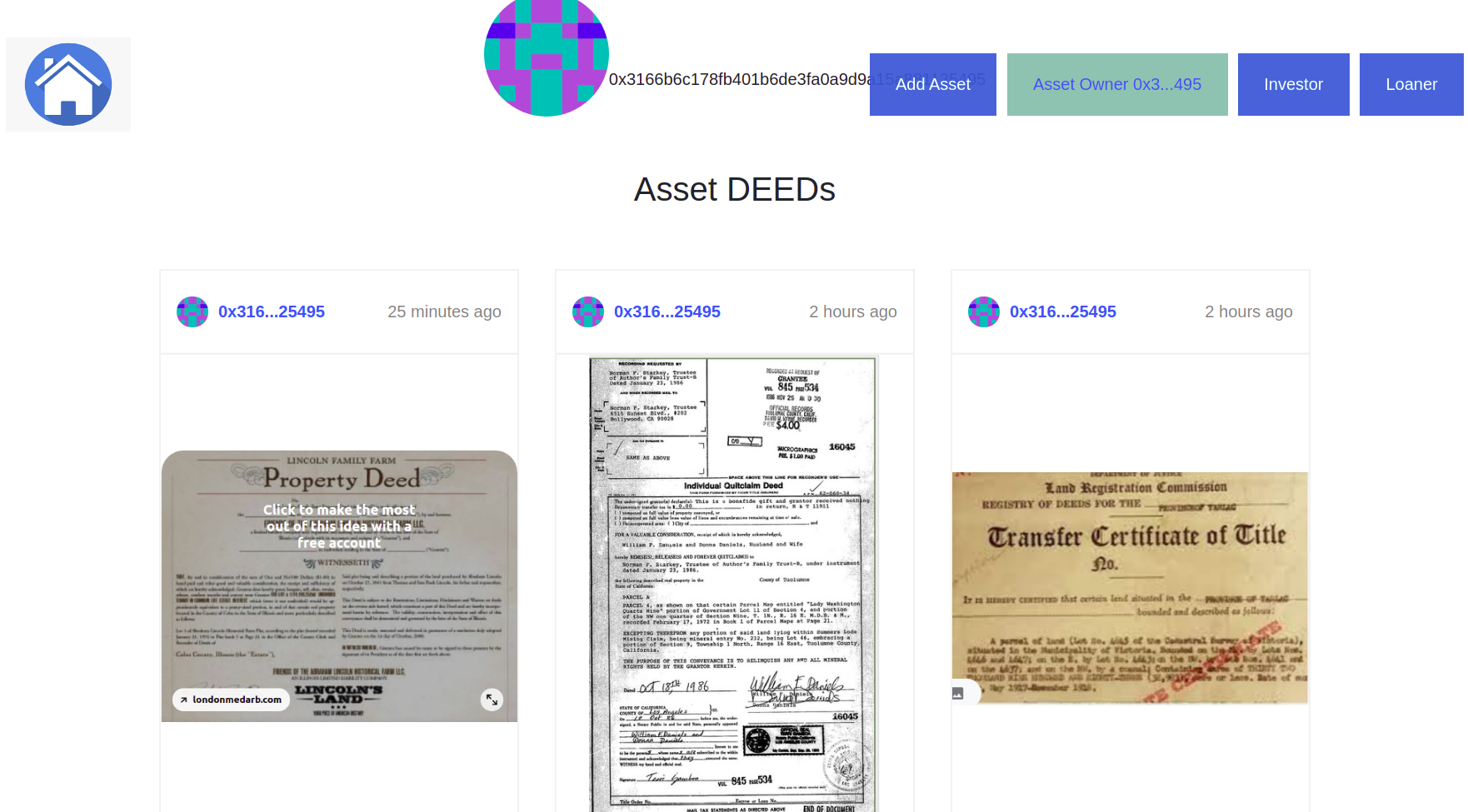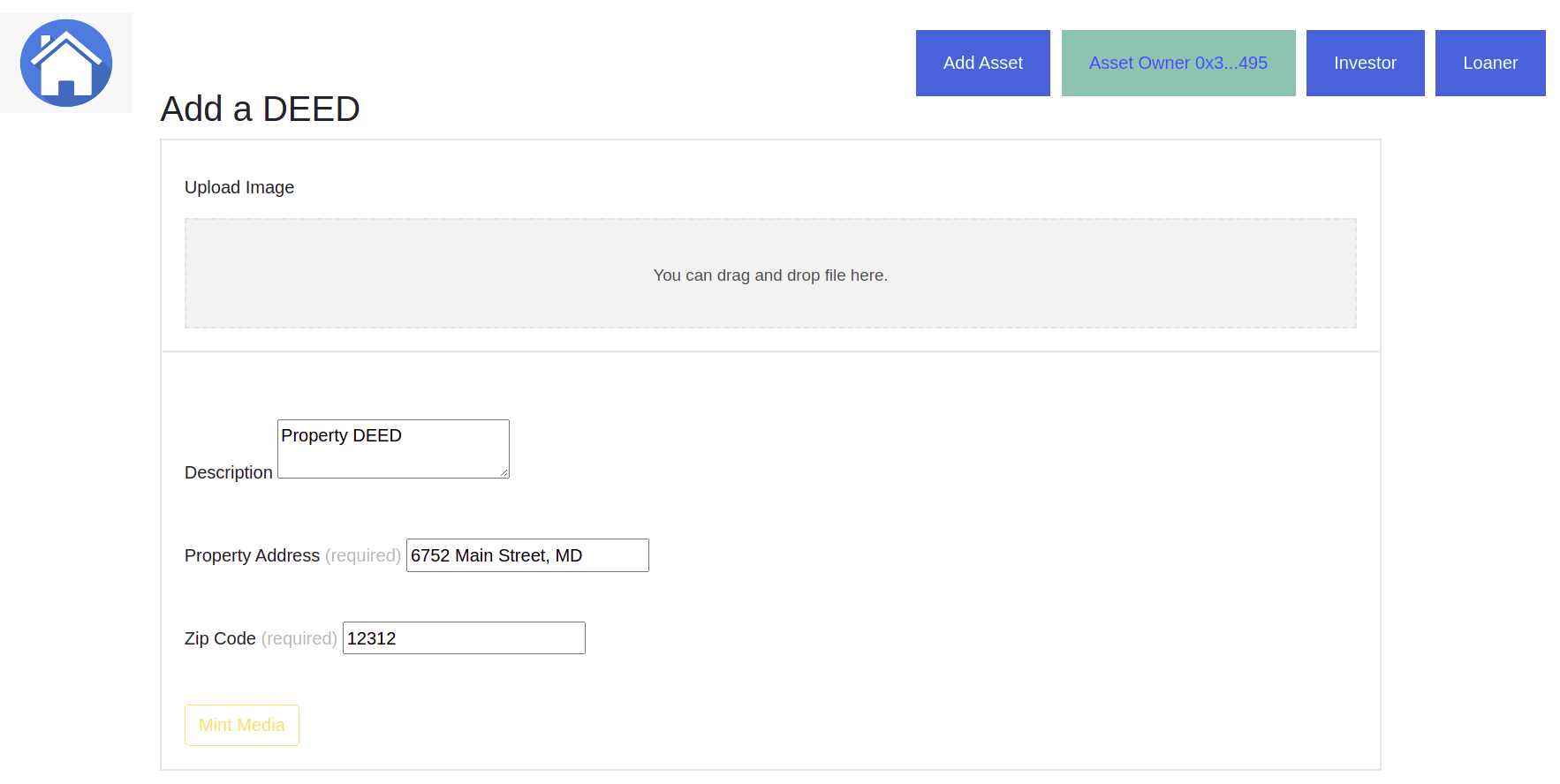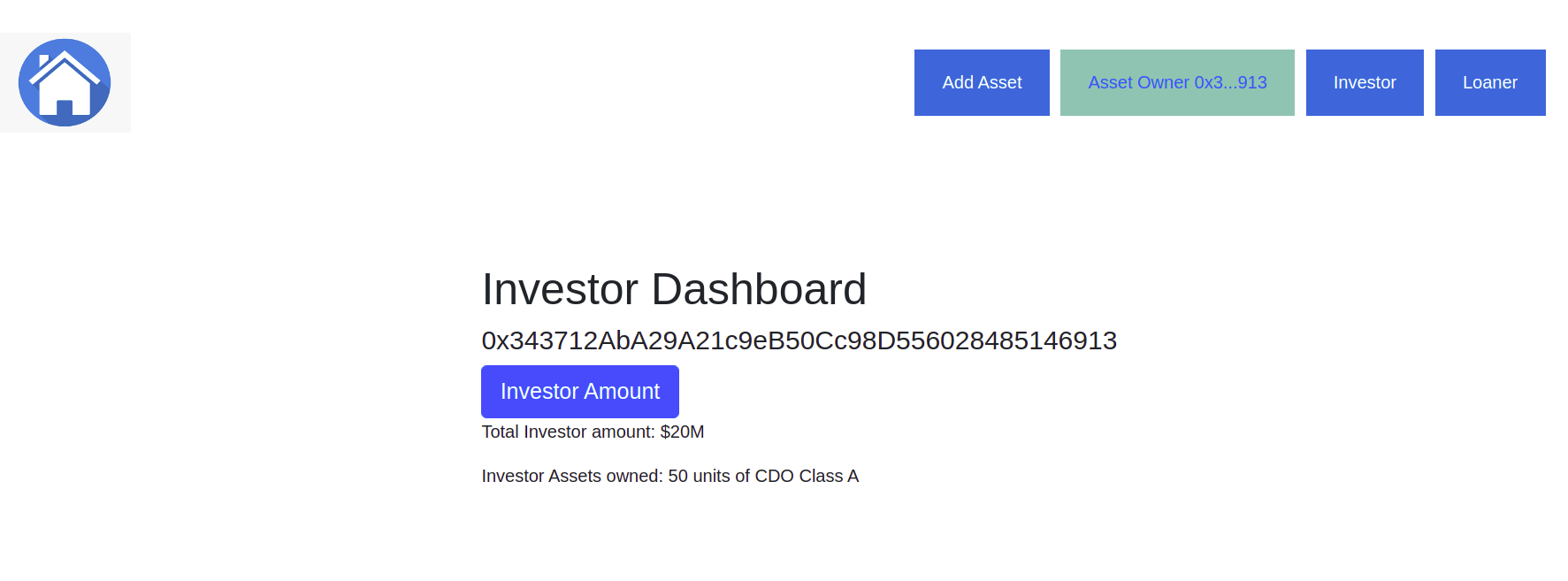CDO Tokenization Asset NFT
Collaterized Debt Obligation (CDO) allows to create tokenized NFTs for a Real Estate property with different granularity, based on risk and payout percentage. This creates liquidity and allows an investor to transfer risk to a loaner and gain cash in return for other investments.
Project Description
Collaterized Debt Obligation (CDO) allows to create tokenized NFTs for a Real Estate property and there by create liquidity. These tokenized NFTs have different granularity, based on risk and payout percentage. An investor deposits money to the Real Estate owner in lieu of some of these tokens. The investor can then sell these tokenized assets to loan company, a pension fund there by allowing the investor to transfer risk and have cash available for other suitable investment properties.
FUTURE WORK: Batch mint tokenized NFTs and smooth flow of CDOPool contract in tracking transaction among Real Estate owner, Investor and Loaners
How it's Made
For the Hackathon, the Real Estate owner uploads the DEED for a property that mints a NFT using the ZORA framework.
The DEED document is stored in IPFS using FLEEK.
Using a Batchmint Utility (not implemented, potentailly use Cargo or 2309), the original asset is tokenized into multiple NFT assets with different risk and payout attributes.
An investor deposits say $20M to Real State Owner using the Collateralized Debt Obligation (CDO) Pool Contract. For the demo, we created an ERC20 token "LNFT" that would act as a form of payment instead of DAI or FIAT currency to showcase large sum swap or
exchange. The investor becomes new owner to the tokenized NFT assets based on their choice and payment. This exchange is tracked in the CDOPool Contract.
A loaner, example: a pension fund, is interested to buy some of the tokenized NFT assets. They pay to the Investor say $10M using "LNFT" ERC20 token as the payment currency. Based on Loaner choice and payment amount, the ownership of these tokenized assets is transferred to the Loaner. These transactions are tracked in CDOPool contract.
This is how the Investor is able to transfer the risk of assets they owned and able to get hold of funds that they could invest in other opportunities.
Enjoyed:
Using FLEEK/IPFS and ZORA framework to save document in IPFS and create NFT. Used Solidity to create CDOPool Contract that
tracked Total Locked Value (TVL) for both tokenized and non-tokenized NFT assets and payments across Real State Owners, Investors and Loaners. Used React to code for UI. The GRAPH is used to display assets owned by any of the parties. The application is tested in Rinkeby TestNet.
Challenges: Calling Contract methods from React took a long time to make it work. There were issues in passing parameters and Contract reference between React pages.




